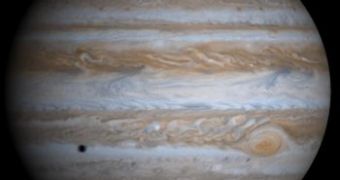A Japanese amateur astronomer recorded a video of a new flash on Jupiter, on Saturday morning Japan time (around 18:22 GMT or 2:22 pm ET Friday), less than three months after a meteor fall that had already impressed astronomers.
In Kumamoto city, on the island of Kyushu, Masayuki Tashikawa pointed his video-equipped telescope toward Jupiter and recorded the second-long flash on the planet.
“I took it for noise signals at first, but I was really surprised because the image of the light remained on the video,” he told Kyodo News.
The flash passed along the northern edge of Jupiter's North Equatorial Belt, at 17° north and System II longitude 140°.
This phenomenon resembles the one on June 3rd spotted by longtime Jupiter-watchers Christopher Go and Anthony Wesley and it all might be a matter of looking in the right spot at the right time.
During space observation history, amateur astronomers have proven very valuable for progress on the search for asteroids, and it seems that the same thing is happening now, for Jupiter's cloud tops.
As this is the second observation of the kind in less than three months, it suggests that Jupiter experiences shooting stars more often than previously thought.
Kelly Beatty from Sky & Telescope quotes astronomer Glenn Orton, at NASA's Jet Propulsion Laboratory, as he suggested that it would be the right time “to establish a worldwide network of Jupiter-monitoring telescopes so that the planet can be watched 24/7.”
In June, Wesley and Go's observations along with data from the Hubble Space Telescope, convinced astronomers that an exploding asteroid was not the cause of the flash, but a meteor that simply did not leave a mark on the cloud tops of the planet.
In the next days, all passionate astronomers will be searching for any traces that might be visible after this weekend's event.
Normally, there isn't any trace on the cloud top, unlike last year's “Great Black Spot”, that left a big scar of the planet visible for a few days.
This last flash was also spotted by another Japanese amateur astronomer, Aoki Kazuo of Tokyo, who was at 800 kilometers away from Tashikawa, so this cannot possibly be an event near Earth.
The Jupiter impact flash August 20, 2010, by Masayuki Tashikawa

 14 DAY TRIAL //
14 DAY TRIAL //